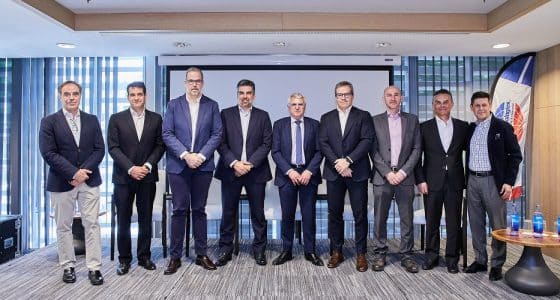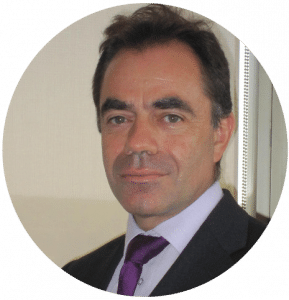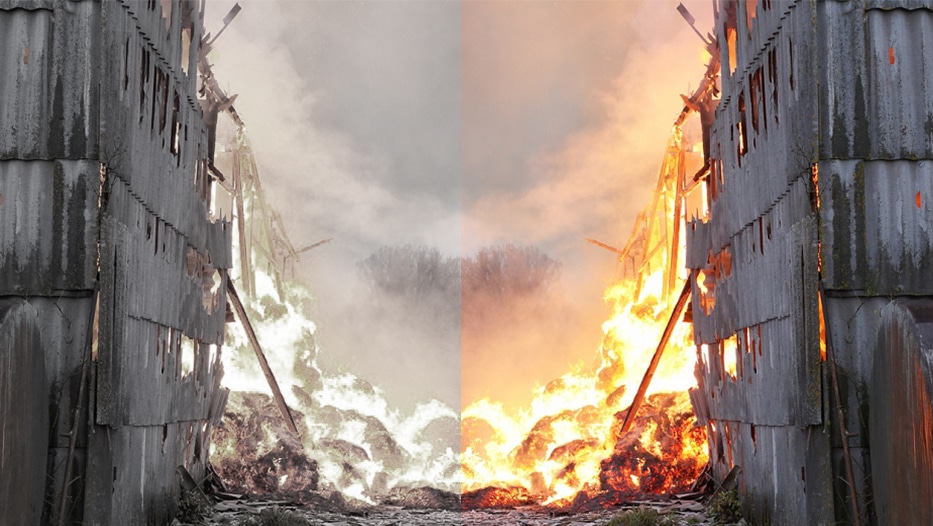Julia Maria Gomez de Avila Segade | 07/07/2023
In 1988, the Risk Management Magazine published an article by José Luis Ibáñez1, who at the time was the director of RELECMAP, a MAPFRE company that offered expert report services. The article titled ‘Salvage and recovery: an alternative to claim’ already read:
“In the early 1970s, damage to computer and communication equipment in several Central European countries was discovered, which, until then, had not been given special consideration. (…) Said contamination had dire consequences for them, resulting after a while in the conversion of what was once fully operational equipment into a pile of scrap metal. As a result of observing these events, various research institutes and official bodies, as well as manufacturing companies in the sector and insurance companies, joined forces to try to reduce these damages as much as possible.”
Ten years after said publication, there were already several companies dedicated to these activities in the Spanish market, among which was the newly established BMS Technologies. Among its services, it offered the recovery of assets severely affected by claims involving water or fire, mainly, but also by agents such as fire extinguishers, contamination, and dirt. To do so, they use systems, procedures, and tools that reduce the potential damage to the affected and apparently unaffected assets.
“The more agile the coordination, the greater the benefit in this recovery”
In the global risks sector, claims occur in the same proportion, therefore, the recovery of damaged assets is essential, not only for the insurer, but also for the customer. This is the case with technology, IT services, and information storage companies, among others, as Ibáñez already mentioned. The more agile the coordination with the loss adjusters, as they are the ones who give notice in most cases (although this can also be done by insurance companies and brokers), the greater the benefit will be obtained in said recovery.

Picture 25th anniversary, BMS organized a meeting with experts like José Carlos Nájera (left), Ignacio Martínez Allué (BMS) anda Juan Carlos López Porcel (second on right).
This year, 2023, and to celebrate its 25th anniversary, BMS organized a meeting with experts from all fields: insurers, brokers, claims recovery… Among them was José Carlos Nájera, Chief Claims Officer at MAPFRE Global Risks, and as moderator, Juan Carlos López Porcel, Chairman of AGERS, who asked questions to stimulate the discussion.
The conversation
Taking advantage of the possibilities provided by the article and thanks to the document preserved by the Documentation Center of Fundación MAPFRE, a dialogue between the past and the present will now take place. In other words, a fictitious discussion between Ibáñez and Nájera “based on real facts,” given that both the moderator’s questions and Nájera’s answers are taken literally from the BMS event and Ibáñez’s answers are literal fragments of the aforementioned article. This will allow us to observe the evolution (or not) over the last almost 30 years.
López Porcel started the conversation by wanting to establish the differences between salvage and recovery:
José Luis Ibáñez, 1988: “Once the origin of the claim and the affected equipment is known, immediate measures for subsequent recovery are a priority action that must be taken without delay; this series of urgent measures is called “salvage” and its purpose is none other than to prevent progressive deterioration and further corrosion in order to proceed to “recovery.” (…) Once the salvage measures have been taken and the agreement and commitment of collaboration between the parties involved (appraisers, insurance technicians, user, manufacturer, and recovery company) has been reached, the recovery or remediation can be carried out; that is, the series of measures leading to the total and definitive elimination of all particles and contaminants that hinder or impair the normal and proper present or future operation of the equipment and/or installation, so that it returns to an operational state equal to that which it had before the occurrence of the claim.”
For his part, José Carlos Nájera, 2023, added: “Recovery activity has evolved significantly both professionally and technologically. It has gone from being limited to a very specific niche of claims and accidents, to begin to be seen as a suitable option for a broader spectrum of cases, both with respect to the type of risks and accidents. It should not be forgotten that the recovery function is not only to attend to the susceptible repair of damaged assets, but also to lessen the losses that the claim may trigger if certain preventive measures are not taken in time.”
1988: “These reasons make the recovery of electronic equipment a commonly accepted reality today”
In your experience, in which cases would you consider recovery more advantageous than other options? Are there cases where you think it may not be beneficial?
José Luis Ibáñez, 1988: “From the insurer’s perspective, the savings generated by the recovery can be very significant compared to the cost of replacement; however, this is nothing compared to the savings derived from the recovery carried out in a claim covered by a policy that includes loss of profit. But, in addition to this direct effect, there are a number of reasons that make recovery advisable and that indirectly lead, of course, to economic savings. The time taken to carry out the recovery work is and must be less than the time taken to supply new equipment. This is all the more true the larger and more complex the equipment is; in many cases, moreover, this equipment comes from other countries and must then take into account customs obstacles and delays, not to mention the cases in which it is “custom-made” equipment.
On the other hand, recovery implies the use of the same damaged equipment, with the same operating system, which means that there is no need to retrain personnel, as would be required for new equipment and systems. Other added advantages are the early and preventive detection of possible faults; the disassembly of equipment sometimes makes it possible to discover damaged components or those whose useful life appears to be nearing its end, thus indicating the advisability of their replacement.
All of these reasons make the recovery of electronic equipment a commonly accepted reality today in all those countries where said activity has been carried out for years and by all parties involved. However, recovery is not always technically possible.”
2023: “The dilemma is usually resolved by the insured party: replenish rather than repair”
José Carlos Nájera, 2023: “The question as to how advantageous the solution is should be complemented by the question of when it should be considered as the mandatory option. As anticipated above, I believe it is appropriate to distinguish between the two actions: the repairing one and, on the other hand, the mitigating one.
Under the insurance contract and the laws that regulate it throughout the world, it is the insured party’s obligation to use all means at their disposal in order to mitigate the consequences of a claim. In short, act as if you have no insurance. This implies that, following the occurrence of a claim, all possible mitigation options must be observed, focused not only on reducing the direct and immediate impact on the affected assets, but also on avoiding its extension to all those that, without having been affected in the first instance, could be affected over time.
Beyond this obligation, consubstantial with the spirit of the insurance contract, lies the advantage of the option of recovering the affected assets as opposed to the option of replacing them. In the overwhelming majority of current contracts, especially in business insurance, with indemnification criteria based on the replacement value of the assets as new, the dilemma is normally resolved by the insured party: replace rather than repair, unless there are other determining circumstances, such as, for example, the advantage of shortening the time required to recover the volume of business and, consequently, reducing the loss of profits.
Obviously there are also circumstances that make recovery the only or most viable option, such as damage to unique, difficult to replace, or simply impossible to replace assets or equipment.”
“Recovery must be an integrated activity in the value chain after a claim”
What challenges do you see that need to be overcome or what aspects need to be improved in order for the recovery solution to play a more central role when a claim occurs?
José Luis Ibáñez, 1988: “It should be noted that, in a large number of cases, for the sake of an effective recovery, it is necessary to “leave the parts for the benefit of everyone,” which means that the recovery is often accompanied by the situation of some elements and components that, for very different reasons, are not recoverable or their recovery is in doubt.
In general terms, it can be said that the limits will be given by the following statements:
In case of fire:
- Due to deterioration of the installation as a result of the direct effects of flames.
- Due to the effect of excessive heat, commonly noticeable in the case of deformations of plastic surfaces and casings.
- Due to an excessive concentration of contaminants such as chlorides.
In case of water damage:
- Because the devices have remained connected during an inflow of water; thus, for example, invisible electrolytic damage and severe corrosion due to electrochemical processes can occur.
- Because the installation has been submerged in deep water for a long period of time.”
José Carlos Nájera, 2023: “The costs associated with the replacement of assets versus their potential recovery are ultimately borne by the insurers, increasing claims costs, which are ultimately passed on through higher rates or the imposition of deductibles on policies. In short, an inflationary model to which insured parties, brokers, and companies contribute, each to our own extent.
Recovery must be an integrated activity in the value chain after a claim, and to this end it is essential to internalize, especially among the insured parties, that it is an efficient and viable option. To do this, and at the same time, the insured party must be reassured that it is an optimal and appropriate decision, offering accessibility wherever the claim occurs, immediacy in the actions, and the maximum guarantees and peace of mind from the viewpoint of professional specialization with respect to the works to be performed.”
“The decision on what to do must be made within a few minutes or, at most, within hours”
As an insurer, what measures do you think could be implemented to make recovery easier/more efficient?
José Luis Ibáñez, 1988: “Our experience in Spain, to date, has involved participating in a wide variety of claims. In no case have the costs of these works exceeded more than 20% of the value of the assets subject to recovery. Therefore, salvage and recovery must be considered as effective alternatives to mitigate the damage resulting from a claim. More than 3,000 successfully completed projects attest to the effectiveness of these techniques (…).
An increasingly applied material nowadays is plastic, as evidenced by the fact that plastic consumption in the European Community increased by more than 10% between 1986 and 1987; and this growth is even greater in Spain.
(…) The behavior of PVC is such that, (…), if the appropriate corrective measures are not taken, the oxidation-corrosion produced will not stop until the material is completely consumed, due to the fact that it is a chain reaction.
(…) The determination of the chloride concentration on contaminated surfaces can be evaluated through various analytical procedures and, from the analysis of these results, approximate conclusions can be drawn as to the feasibility of remediation. However, often, if not in all cases, the decision on what to do must be made within minutes or, at most, within hours, making it operationally unviable to wait for laboratory results. It is experience alone, supported by means of the immediate evaluation of contaminants, which will determine the appropriateness of recovery and the steps to be taken.”2
José Carlos Nájera, 2023: “As an insurer, I can think of one, probably unpopular. Returning to the aforementioned spirit of the insurance contract, where it is established that “Insurance cannot be the object of unjust enrichment for the insured party” and, therefore, that “in order to determine the damage, the value of the insured interest at the time immediately prior to the occurrence of the claim must be taken into account.” One measure to make recovery the first option would be to eliminate the criterion of indemnification based on the value as new of the damaged assets from policies.
In practice, and following on from the previous question, the option obviously involves convincing the insured party of the benefits of this option in the aforementioned value chain as a cost saving and, to do so, work must be done on issues such as the immediacy of actions (they are usually urgent actions) and the availability of the right professionals —specialized and on the ground in an accessible and immediate manner— and, fundamentally, the guarantee of the works performed in order to eliminate any uncertainties.”
How do you think decision-making could be streamlined to make this service even more efficient?
José Carlos Nájera, 2023: “I believe that this questions has already been implicitly answered in the previous ones [José Luis Ibáñez would nod his head]: The efficiency of this activity is essentially based on immediacy. These are urgent interventions and decisions must be made as soon as possible after a claim has occurred. To this end, the role of the intervening appraiser is fundamental, determining, together with the insured party, the confirmation that an action of this nature is beneficial from an economic point of view and as an added service to the insured party themselves.”
- José Luis Ibáñez Gotzens was director of RELECMAP, a MAPFRE expert report service facilitator company, and was subsequently part of MAPFRE Global Risks until 2017. Among his functions, he was editor of the Risk and Insurance Management Magazine.
- In the words of Ignacio Martínez Allué, Business Development Director at BMS Tec: “Recovery companies can now, in the same inspection, take semi-quantitative measures to determine the degree of corrosion (chlorides) and, following international standards, assess whether or not it is recoverable.”
Articles’s autor…

Collaborators article… 
José Carlos Nájera, Chief Claims Officer en MAPFRE Global Risks





